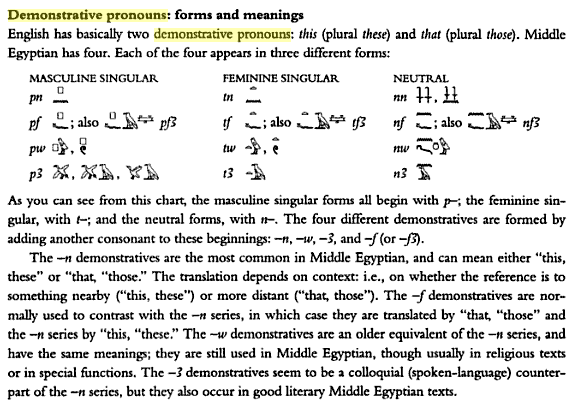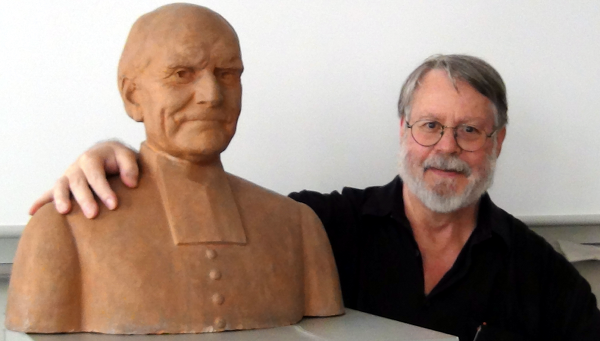Archive for Linguistic history
The broccoli horrible
I was first struck by the expression "parade of horribles" back in April 2008, when then-Senator Barack Obama used it to describe testimony by General David Petraeus and Ambassador Ryan Crocker about what might happen if U.S. forces withdrew from Iraq too hastily. I wrote a Language Log post about it, tying it to another expression that was in the news at the time: "false terribles," used by Rob Lowe to describe things that his nanny accused him of doing. "False terribles" turned out to be pretty much a one-off, but "horribles," usually of the parading variety, have shown up again and again in legal discussions, most recently in the Supreme Court's health care decision on Thursday — which featured, in Justice Ginsberg's pungent opinion, a "broccoli horrible" (referring to the slippery-slope argument that if government can make you buy health insurance, they might someday make you buy broccoli, too).
For a full explanation of how the legal putdown took shape, read my latest Boston Globe column (online now, in print on Sunday). I trace how "the parade of horribles" emerged as a satirical Independence Day tradition in mid-19th century New England, then made the metaphorical jump into discussions of judicial argumentation c. 1921, thanks to the legal scholar Thomas Reed Powell. Since then, the expression has lived a double life: with various shore towns in Massachusetts and Rhode Island keeping the actual "parades of horribles" going, and lawyers and judges debating over figurative ones. Fortunately, I was able to get The Broccoli Horrible into the column under the wire, noting that it would make a pretty awesome band name.
[Update, 7/4: For further documentation, see my followup Word Routes column.]
Three scenes in the life of "meh"
 When I first posted here in 2006 about the indifferent interjection meh ("Meh-ness to society") I never imagined that this unobtrusive monosyllable would provide such rich linguistic fodder for years to come. I returned to it in 2007 ("Awwa, meh, feh, heh") and 2008 ("Mailbag Friday: 'Meh'" on the Visual Thesaurus; "The 'meh' wars" and "The 'meh' wars, part 2" here). But the meh well has hardly run dry: in today's Boston Globe, I have a column on "The meh generation" that sheds some new light on the exclamation's history and current use.
When I first posted here in 2006 about the indifferent interjection meh ("Meh-ness to society") I never imagined that this unobtrusive monosyllable would provide such rich linguistic fodder for years to come. I returned to it in 2007 ("Awwa, meh, feh, heh") and 2008 ("Mailbag Friday: 'Meh'" on the Visual Thesaurus; "The 'meh' wars" and "The 'meh' wars, part 2" here). But the meh well has hardly run dry: in today's Boston Globe, I have a column on "The meh generation" that sheds some new light on the exclamation's history and current use.
Read the rest of this entry »
"Downton Abbey" anachronisms: beyond nitpickery
I've been taking advantage of the rabid interest in "Downton Abbey" lately to report on some verbal anachronisms that have cropped up in the show's second season (originally broadcast on ITV in the UK late last year and now wrapping on PBS in the US). Over the past few days I've written about it in columns for The Boston Globe and the Visual Thesaurus, and I was interviewed on the topic for NPR Morning Edition earlier today. I also put together a video compilation of questionable lines from the show, and it's been making the rounds in culture-y corners of the blogosphere:
Read the rest of this entry »
Phonemic SFE disconfirmed
Last spring, I took a look ("Phonemic diversity decays 'out of Africa'?", 4/16/2011) at an interesting paper by Quentin Atkinson ("Phonemic Diversity Supports a Serial Founder Effect Model of Language Expansion from Africa", Science 4/15/2011). Atkinson argued that a survey of sound systems around the world supports the so-called serial founder effect (SFE) "in which successive population bottlenecks during range expansion progressively reduce diversity", just as a similar survey of human genetic and phenotypic diversity does. He also argued that the phonemic-diversity evidence points to an origin in Africa, again just like the genetic evidence.
I expressed some skepticism about this argument, mainly based on some of the choices that Atkinson made in quantifying "phonemic diversity". One choice that I considered in detail was the critical role played by a few features such as tone, which (on the time scale of human global migration) are at least as likely to result from innovation and areal spread as from survival.
Now Keith Hunley, Claire Bowern, and Meghan Healy ("Rejection of a serial founder effects model of genetic and linguistic coevolution", Proceedings of the Royal Society B, 2/1/2012) have taken another look at the genomic and phonemic predictions of the SFE. They chose a very different way of coding the distribution of phonemes — formally analogous to the way that they coded genetic variation — and this time, the phonemic data gave very different results.
Read the rest of this entry »
Real trends in word and sentence length
A couple of days ago, The Telegraph quoted an actor and a television producer emitting typically brainless "Kids Today" plaints about how modern modes of communication, especially Twitter, are degrading the English language, so that "the sentence with more than one clause is a problem for us", and "words are getting shortened". I spent a few minutes fact-checking this foolishness, or at least the word-length bit of it — but some readers may have misinterpreted my post as arguing against the view that there are any on-going changes in English prose style.
Read the rest of this entry »
30 years of linguistics at Gallaudet
[Below is a guest post by Arika Okrent.]
This weekend I had the pleasure of attending a celebration for the 30th anniversary of the establishment of the Linguistics Department at Gallaudet University. Gallaudet is the world's only university for the deaf. Nearly all the undergraduates at Gallaudet have some kind of hearing loss (a very small number of hearing students may be admitted each year), while the graduate school (offering programs in audiology, deaf education, psychology, and interpretation, among others) has a significant number of hearing students. I received an M.A. in Linguistics from Gallaudet in 1997.
Read the rest of this entry »
Replicating the snuckward trend
In yesterday's post "Deceptively valuable", I made use of counts from the Google Books ngram dataset, as seen through Mark Davies' convenient interface. That was a case where the ngram dataset's flaws (uncertain metadata, lack of ability to look at context, etc.) are more than balanced by its virtues. In thinking about some of the other issues involved, I remembered a case that makes it possible to check the ngram dataset's answers against those given by another historical collection: the trend over the past century for Americans to replace "sneaked" with "snuck".
Read the rest of this entry »
"Whose speech is free of p3's"
In response to "Strunk and Ptah", 10/6/2011, Reader KD has pointed me to a passage in James P. Allen, "Middle Egyptian: an introduction to the language and culture of hieroglyphs", 2000, which describes a real instance of ancient Egyptian prescriptivism. Crucial background is provided by the history of demonstratives in Egyptian:
Read the rest of this entry »
Who Put the X in AXB: Snowclone Follies of 1912
Inspired by Mark Liberman's post, "Putting the X in AXB," I spent some time trying to find the origin for this venerable snowclone. A quick check of newspaper databases uncovered "putting the fun in fundamentals" from November 1912, and it turns out that the fall of 1912 was when the snowclone snowballed. It's a nice example of how, even a century ago, lingua-memes could "go viral" (and go stale).
Read the rest of this entry »
Bookworm
When the Google Ngram Viewer came out, I tempered my enthusiastic praise with a complaint ("More on 'culturomics'", 12/17/2010):
The Science paper says that "Culturomics is the application of high-throughput data collection and analysis to the study of human culture". But as long as the historical text corpus itself remains behind a veil at Google Books, then "culturomics" will be restricted to a very small corner of that definition, unless and until the scholarly community can reproduce an open version of the underlying collection of historical texts.
I'm happy to say that the (non-Google part of) the Culturomics crew at the Harvard Cultural Observatory have taken a significant step in that direction, building on the work of the Open Library. You can check out what they've done with an alpha version of an online search interface at http://bookworm.culturomics.org/. But in my opinion, the online search interface, alpha or not, is the least important part of what's going on here.
Read the rest of this entry »
Sequoyah's syllabary, from parchment to iPad
In a great use of comic art, Roy Boney Jr. has created a graphic feature for the magazine Indian Country Today about the history of the Cherokee syllabary developed by Sequoyah in the early 19th century. Boney begins with the syllabary's inception and early use, and continues all the way through technological developments like the Selectric typewriter and Unicode standardization. Check it out here.
Empirical Foundations of Linguistics
I gave a talk a few weeks ago at the Laboratoire de Phonétique et Phonologie in Paris, founded in 1897 by L'abbé P.-J. Rousselot. Antonia Colazo-Simon took this picture of l'abbé and me:
Read the rest of this entry »


